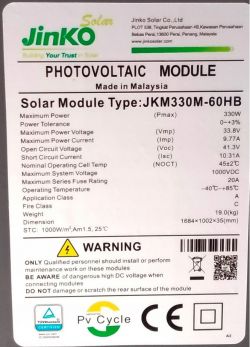theo33 wrote:But you cannot treat such a DC circuit as completely isolated from the ground and from other devices which, due to their function, may have contact with the N or PEN conductor.
Especially in the case described, where we install photovoltaic modules with a metal casing on a metal roof, a DC circuit is created at the poles with a voltage of about 1000 V, this circuit is connected to an on-grid inverter which is connected to the power grid and even if it was a transformer inverter with With galvanic isolation, one of the DC poles has ground potential through internal connections, not to mention those currently used without galvanic isolation.
So, connecting such a structure with an equipotential bonding cable to the ground would increase the risk of electric shock? so be more dangerous ????
And yet do you recommend the potential equalization of the panel frames?
The DC circuits are essentially insulated from earth (excluding solutions where one pole has an operational earthing) and must not come into direct contact with the PEN / N conductors. However, as for my recommendation, it results from the order of the magnitude of the probability. Quite simply, a situation where the chassis grounding increases the risk is unlikely, and I have only mentioned this to highlight the nature of the DC circuit fault loop (which does not normally close via ground). On the other hand, the risk of damaging the panels due to overvoltages caused by direct or indirect effects of lightning is already important (and the correct earthing of the panels is an element of the protection system). Therefore, balancing these risks, I recommend (correct) grounding the panels, even if theoretically it increases the risk of DC electric shock.





